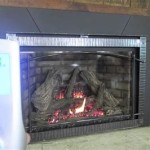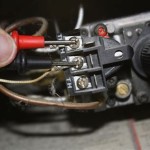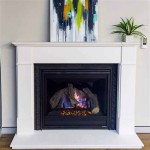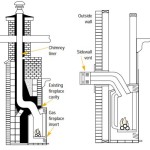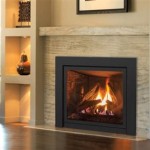How To Paint Brick Fireplace Makeovers
Painting a brick fireplace is a popular and relatively inexpensive method to dramatically alter the aesthetic of a living space. A brick fireplace, while often a focal point, can become dated or clash with evolving interior design preferences. Painting offers a quick and transformative solution, updating the fireplace's appearance to suit contemporary styles. This article provides a comprehensive guide to painting a brick fireplace, covering crucial preparation steps, paint selection, and application techniques, ensuring a professional and long-lasting finish.
Preparing the Brick Surface for Painting
Proper preparation is paramount to ensure the paint adheres correctly and the final result is satisfactory. Neglecting this stage can result in peeling, chipping, or an uneven finish. The preparation process involves thorough cleaning, addressing any damage or imperfections, and priming the brick surface.
The initial step is to meticulously clean the brick. This process removes dirt, soot, dust, and any potential contaminants that could interfere with paint adhesion. A wire brush is effective for scrubbing the brick, dislodging stubborn debris. Following the wire brush application, a mixture of trisodium phosphate (TSP) and water, following the manufacturer's instructions, should be applied to the brick surface. TSP is a strong cleaning agent that effectively cuts through grease and grime. The TSP solution should be rinsed thoroughly with clean water to remove any residue. Allow the brick to dry completely before proceeding.
After cleaning, inspect the brick and mortar for any cracks, chips, or missing mortar. These imperfections need to be addressed before painting. Small cracks can be filled with patching compound specifically designed for masonry. Larger cracks or missing mortar joints require re-pointing, a process of applying new mortar to the affected areas. Ensure the patching compound or new mortar is fully cured and dry before proceeding to the next stage. This curing process typically takes several days, depending on the product and ambient conditions.
Priming is an essential step in preparing the brick for paint. Primer seals the porous surface of the brick, creating a uniform base for the paint to adhere to. This prevents the paint from being absorbed excessively into the brick, resulting in an uneven finish and potentially requiring more coats of paint. A high-quality masonry primer is recommended. Apply the primer evenly, using a brush for detailed areas and a roller for larger surfaces. Allow the primer to dry completely according to the manufacturer's instructions before applying the paint.
Selecting the Appropriate Paint for Brick
Choosing the right type of paint is crucial for achieving a durable and aesthetically pleasing finish on a brick fireplace. Not all paints are suitable for brick, and using the wrong type can lead to problems such as peeling, cracking, and moisture damage. Factors to consider include the paint's breathability, durability, and resistance to heat.
Latex paint is generally recommended for painting brick fireplaces. Latex paint is water-based, allowing the brick to "breathe," meaning it allows moisture to escape from the brick rather than trapping it inside. Trapped moisture can lead to deterioration of the brick over time. Acrylic latex paints are a durable option, offering good adhesion and resistance to fading. Consider using a paint specifically formulated for masonry or exterior use, as these paints are designed to withstand temperature fluctuations and exposure to moisture.
Oil-based paints, while durable, are not typically recommended for brick fireplaces due to their lack of breathability. Oil-based paints can trap moisture within the brick, leading to damage over time. Additionally, oil-based paints tend to yellow over time, especially when exposed to heat.
The paint finish also plays a role in the overall aesthetic and durability. Matte finishes offer a subtle, non-reflective look and can help to conceal imperfections. Satin finishes are slightly more reflective and easier to clean. Semi-gloss and gloss finishes are the most reflective and durable, but they can highlight imperfections. Consider the overall design style of the room and personal preferences when selecting the paint finish. Sample paint application is advised to visualize the final finish.
Applying the Paint to the Brick Fireplace
Proper paint application is essential for achieving a professional-looking finish. This involves using the correct tools, applying multiple thin coats, and paying attention to detail. Rushing the process or applying paint unevenly can result in an unsatisfactory outcome.
The necessary tools for painting a brick fireplace include paintbrushes, rollers, paint trays, painter's tape, and drop cloths. Use high-quality brushes for detailed areas, such as mortar joints and corners. A roller with a nap appropriate for textured surfaces is suitable for larger, flat areas. Painter's tape should be used to protect adjacent surfaces, such as the wall surrounding the fireplace. Drop cloths should be placed on the floor to protect it from paint splatters.
Begin by "cutting in" around the edges of the fireplace with a paintbrush. This involves carefully painting a narrow strip along the perimeter of the fireplace, where it meets the wall or other surfaces. This creates a clean, defined edge. Following cutting in, use a roller to apply paint to the larger, flat areas of the brick. Work in small sections, ensuring even coverage. Pay particular attention to the mortar joints, ensuring they are fully coated with paint. It may be necessary to use a brush to work the paint into the mortar joints to ensure proper coverage.
Apply multiple thin coats of paint, rather than one thick coat. Thin coats dry more evenly and are less prone to running or dripping. Allow each coat to dry completely according to the manufacturer's instructions before applying the next coat. A minimum of two coats is typically recommended, but depending on the color of the brick and the opacity of the paint, additional coats may be necessary to achieve full coverage. After the final coat has dried, carefully remove the painter's tape. Inspect the painted fireplace for any imperfections or areas that need touch-up. Address these areas with a small brush, ensuring a seamless finish.

How To Paint A Brick Fireplace

Mortar Wash Brick Fireplace Makeover Dimples And Tangles

Fireplace Decorating Painting Brick Ideas For The Diyer

7 Beautiful Ideas For Painting Interior Brick Fireplaces

Diy Fireplace Makeover How To Paint A Brick The Right Way

10 Painted Brick Fireplace Makeovers You Can Do On A Budget Run To Radiance

How To Paint A Brick Fireplace The Right Way

Fireplace Makeovers That Will Leave You Diving Into A Diy Project

Painted Brick Fireplace Makeover A Heart Filled Home Diy Decor

How To Paint A Brick Fireplace And The Best Use Craftivity Designs
Related Posts

